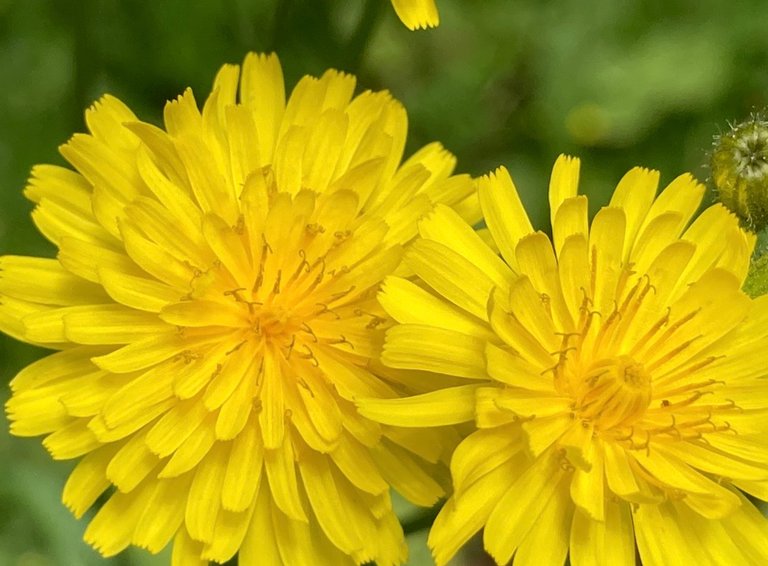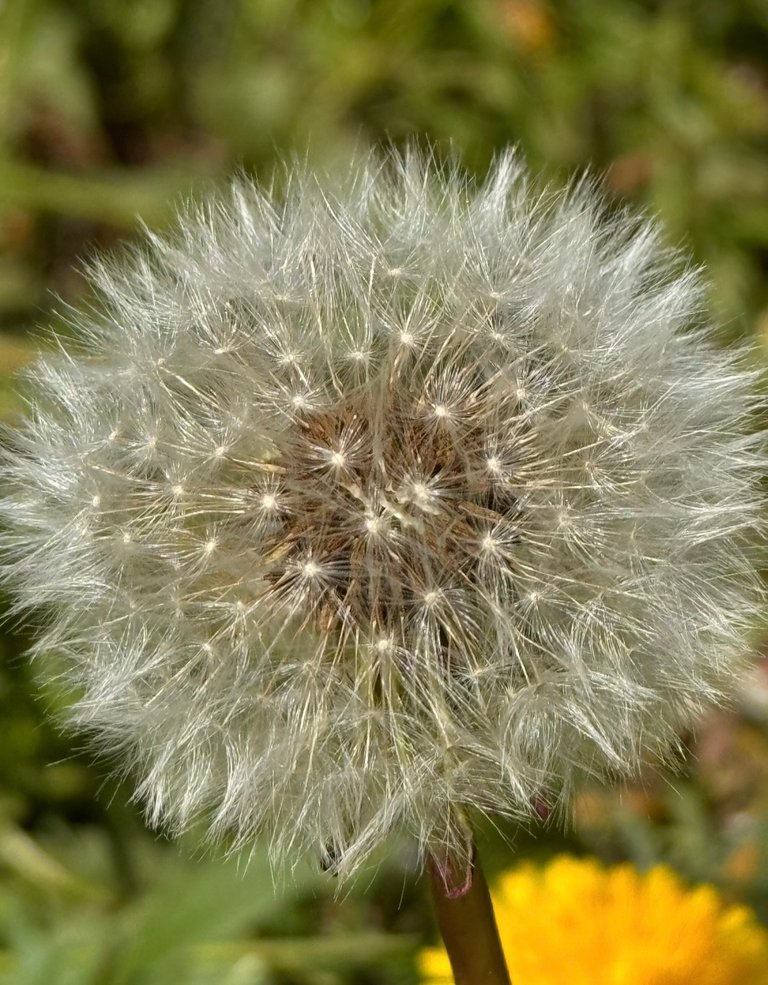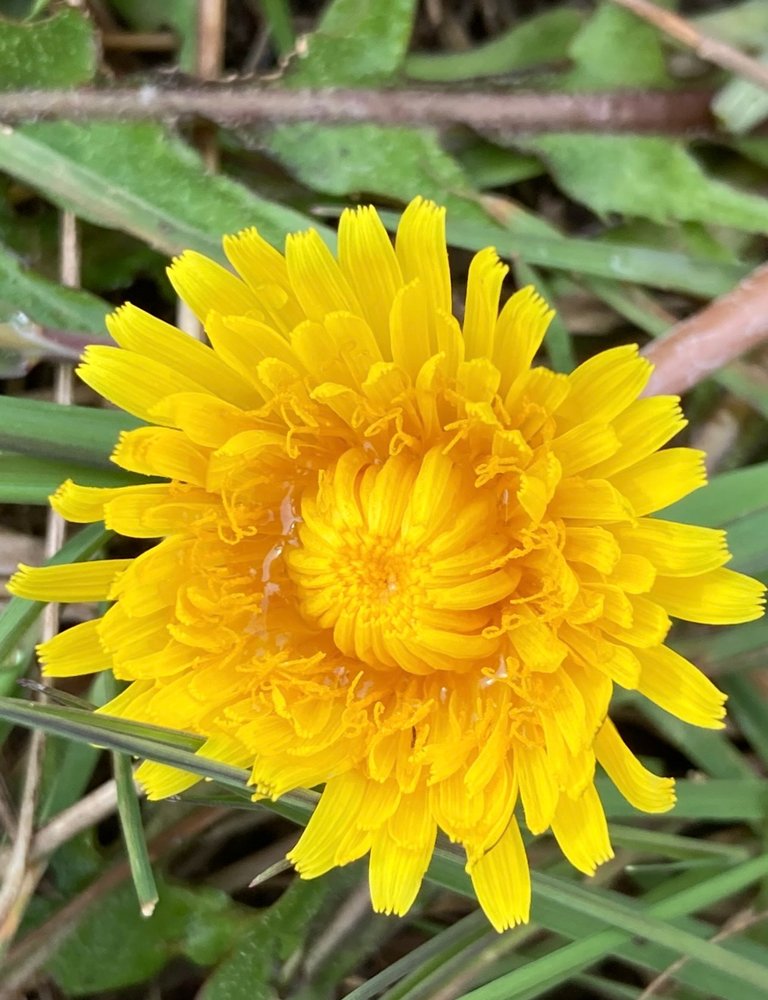Dandelions! I know-everybody thinks they are an annoying weed and invasive,which they definitely can be, but did you know they are versatile and have many uses? The greens, the younger, the better are used in salads. The flowers are edible and the roots used as a coffee substitute.
Here’s what Grok says:
Culinary Uses
• Leaves: Young dandelion leaves are edible, used in salads, smoothies, or cooked as greens. They’re bitter, rich in vitamins A, C, K, and minerals like iron and calcium. Best harvested before flowering for milder flavor.
• Flowers: Bright yellow flowers can be eaten raw, added to salads, or used to make dandelion wine, jelly, or tea. They’re slightly sweet and nutrient-rich.
• Roots: Roasted dandelion roots serve as a coffee substitute, with a nutty, earthy flavor. They’re also used in soups or teas, often for their digestive benefits.
Who knew?! I know they are often included in a spring salad mix at the local supermarket and also at health food stores. Just ask @silvertop about his dandelion wine escapade!
More from Grok:
Medicinal Uses
• Traditional Medicine: Dandelions have been used for centuries in herbal remedies:
• Diuretic: Leaves promote urine production, aiding kidney function and reducing water retention.
• Digestive Aid: Roots stimulate appetite, support liver function, and may help with mild constipation or bloating.
• Anti-inflammatory: Compounds like taraxasterol may reduce inflammation, used in teas or extracts.
• Antioxidants: Dandelions contain polyphenols and beta-carotene, potentially supporting overall health.
• Modern Applications: Some studies suggest dandelions may have antimicrobial, antiviral, or anti-cancer properties, though more research is needed. Consult a healthcare provider before using medicinally, especially with medications like diuretics or antibiotics.
I’ve used dandelion tea as a detox. It’s actually pretty tasty!
More from Grok:
Practical Uses
• Gardening: Dandelions attract pollinators like bees, supporting biodiversity. Their deep taproots aerate soil and bring up nutrients, benefiting nearby plants.
• Dye: Flowers and roots can produce yellow or green natural dyes for fabrics or crafts.
• Compost/Fertilizer: Dandelions are nutrient-rich, making them excellent for compost or as a liquid fertilizer when steeped in water.
• Animal Feed: Leaves and flowers are safe for livestock, rabbits, or chickens in moderation, providing nutrients.
Other Uses
• Cosmetics: Dandelion extracts are used in skincare for their antioxidant and anti-inflammatory properties, potentially aiding acne or aging skin.
• Cultural: Dandelion seeds are used in wishes or as a symbol of resilience in folklore.
How many times as a child or an adult for that matter, have we made a wish and blew the dandelion fluff into the wind? Lots, I’m sure!
Your average dandelion bloom yields 150-250 seeds per head! Amazing! It’s no wonder they are everywhere!
The blossoms themselves kind of remind me of a sunflower minus the seed head, or perhaps a two part sunflower! One with the bloom and a later stage with the seeds. There is no doubt the are one of the first signs of spring!
Work was busy as usual, but tomorrow is Thursday, or for me, ‘hump day’.
That’s gonna be it for me. Take care always and enjoy the rest of your day wherever you are! 🙏🌎🙏
👣🐑☕️🌞😎👍😁🌙🥱😴
NKJV Psalm 1:1-3
Blessed is the man
Who walks not in the counsel of the ungodly,
Nor stands in the path of sinners,
Nor sits in the seat of the scornful;
But his delight is in the law of the LORD,
And in His law he meditates day and night.
He shall be like a tree
Planted by the rivers of water,
That brings forth its fruit in its season,
Whose leaf also shall not wither;
And whatever he does shall prosper.
This report was published via Actifit app (Android | iOS). Check out the original version here on actifit.io



Picture taken by me and altered by cliptocomic app
@elizabethbit is a member of ladiesofsgs4eva
a sweet group of lady stackers of SGH




 mitimages.com/640x0/
mitimages.com/640x0/















 -
- 